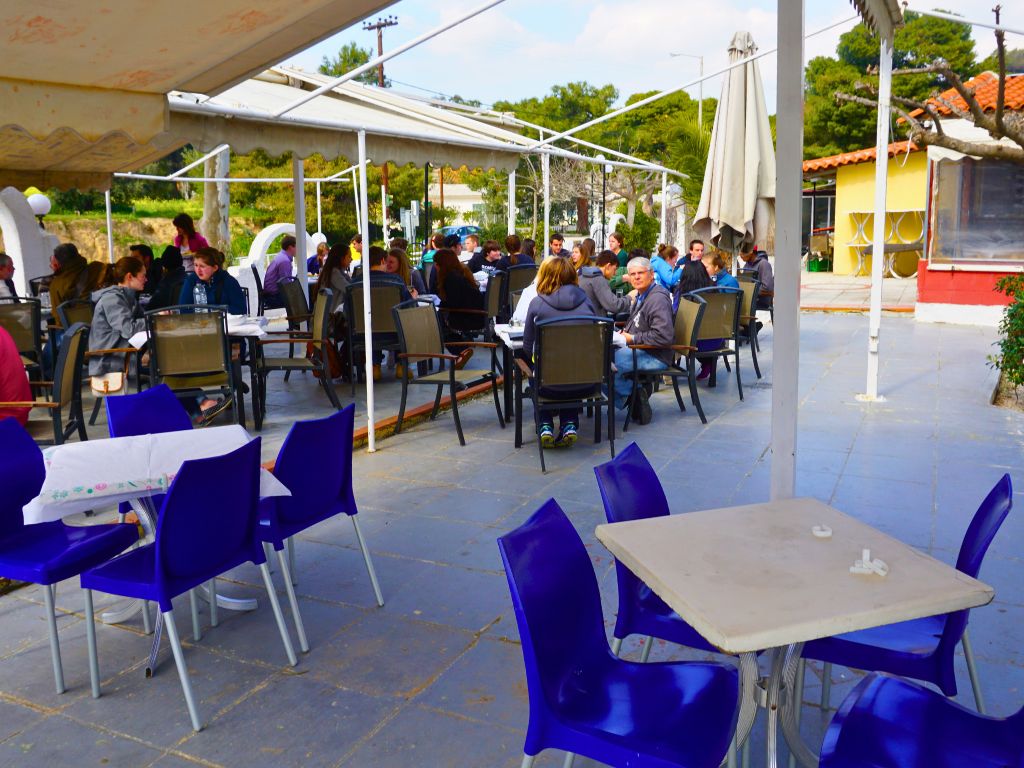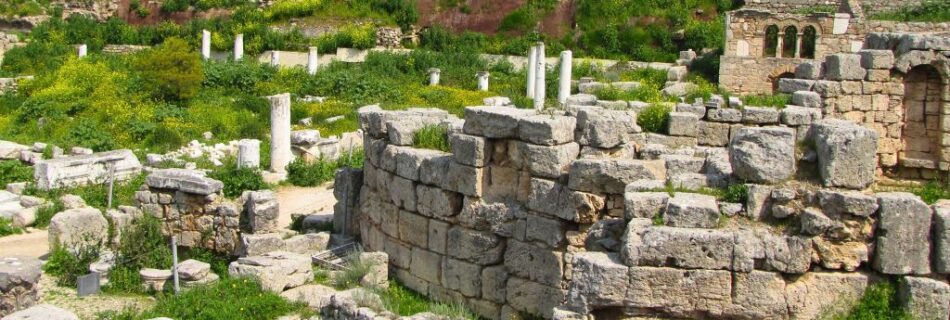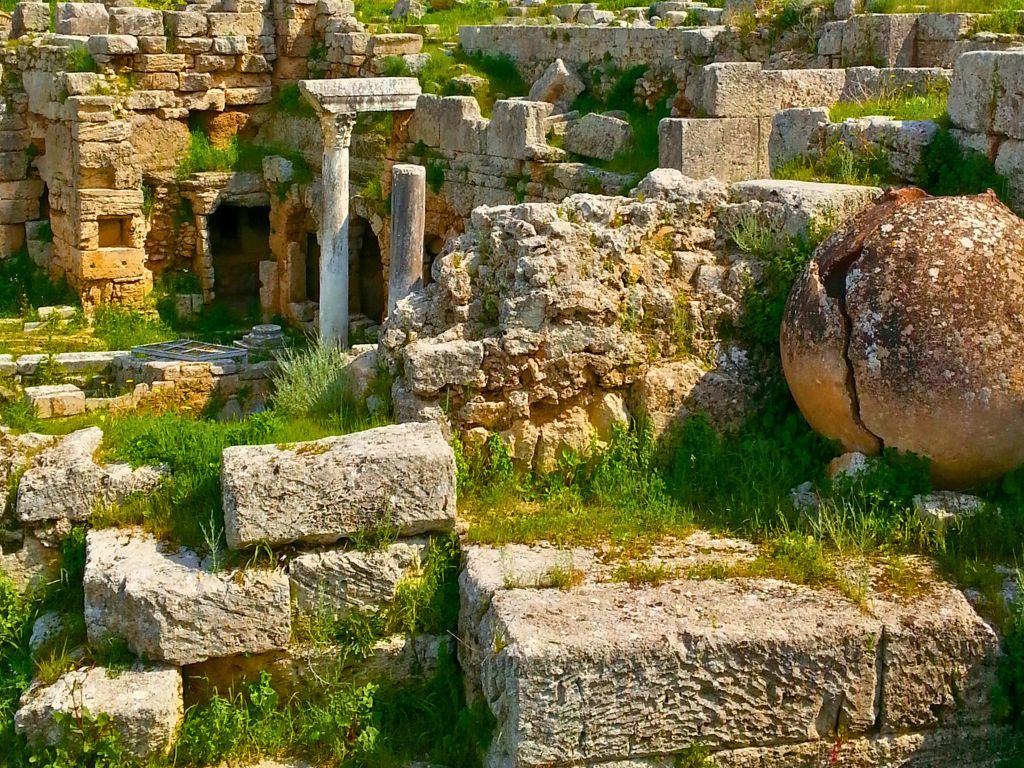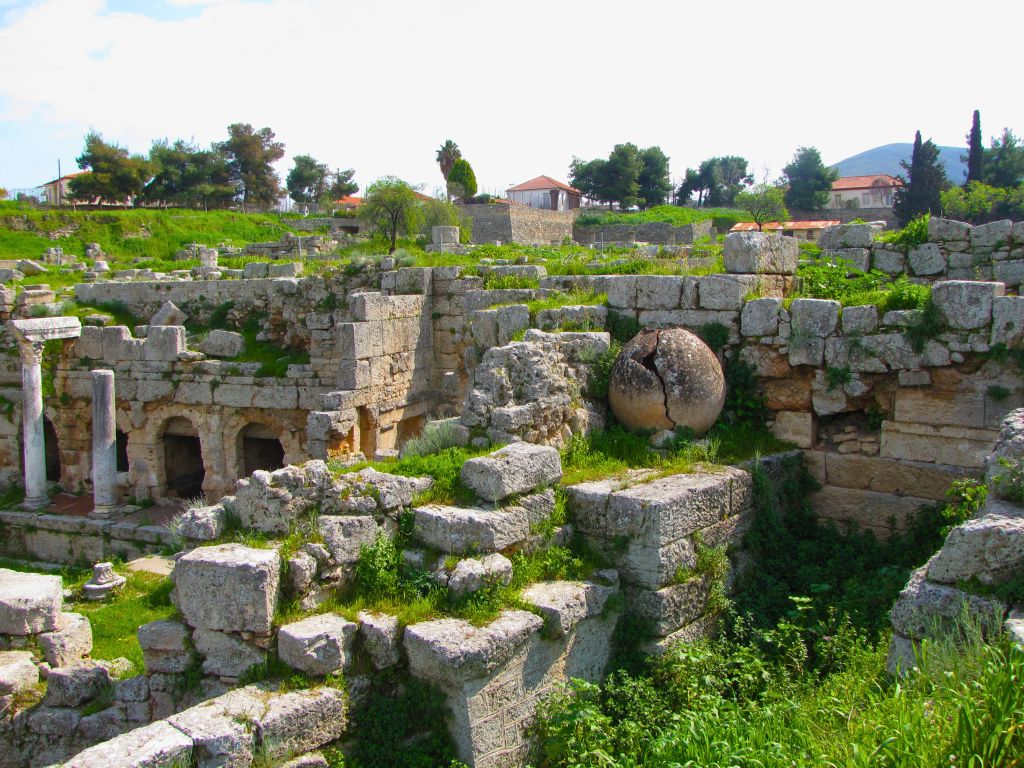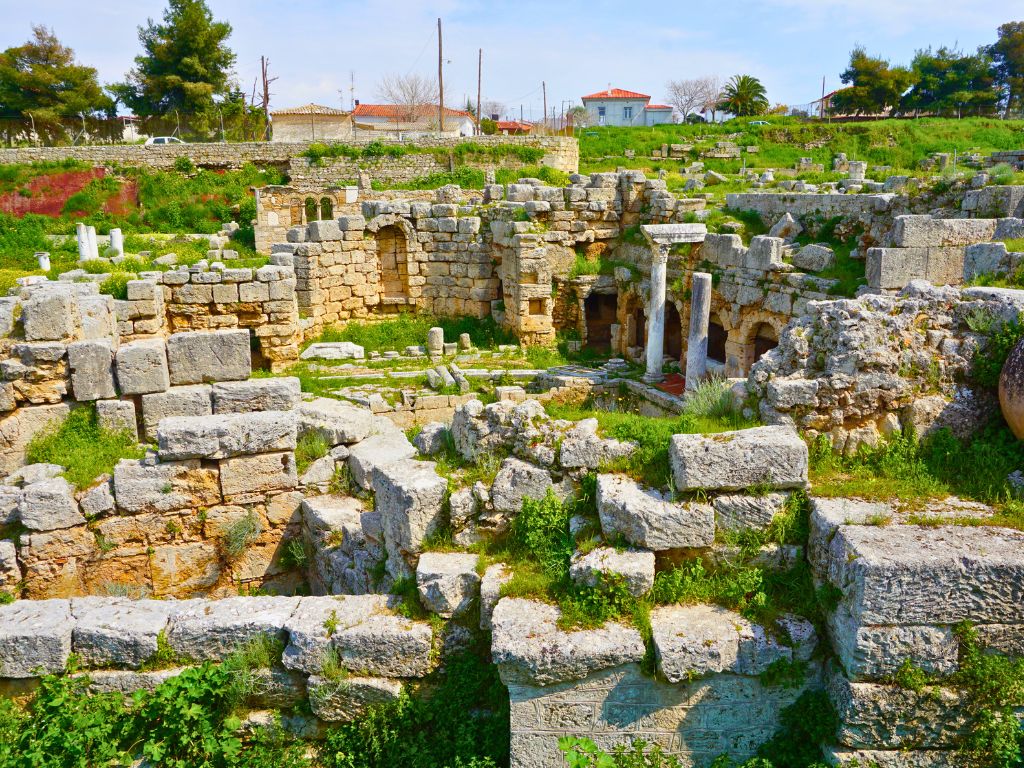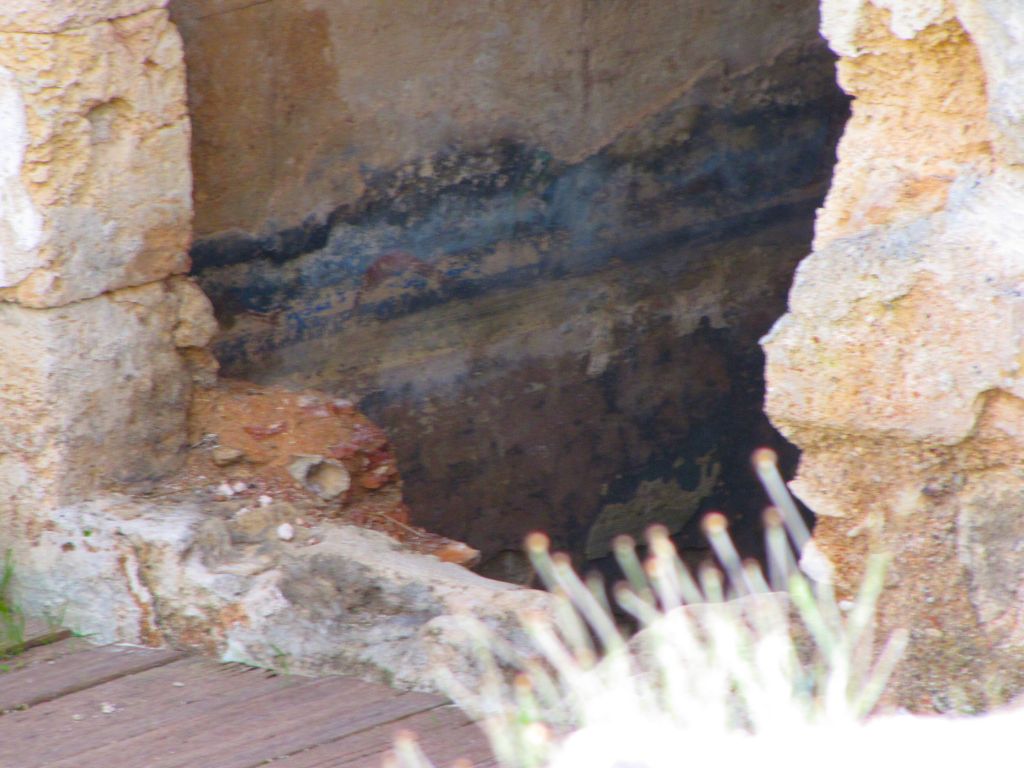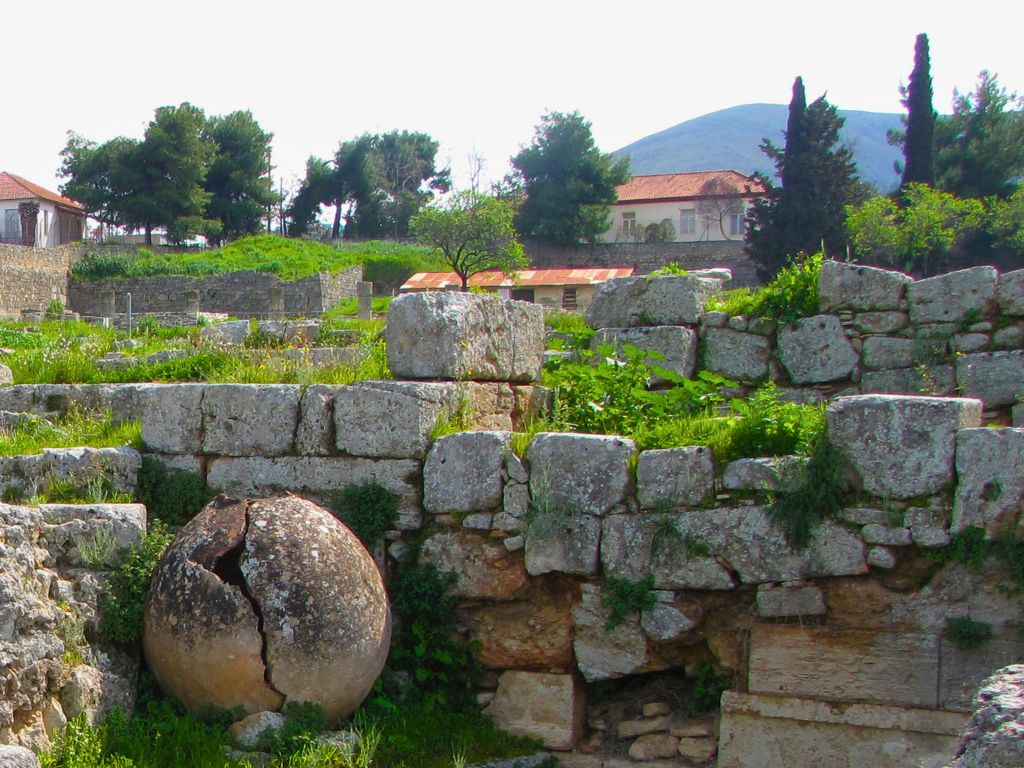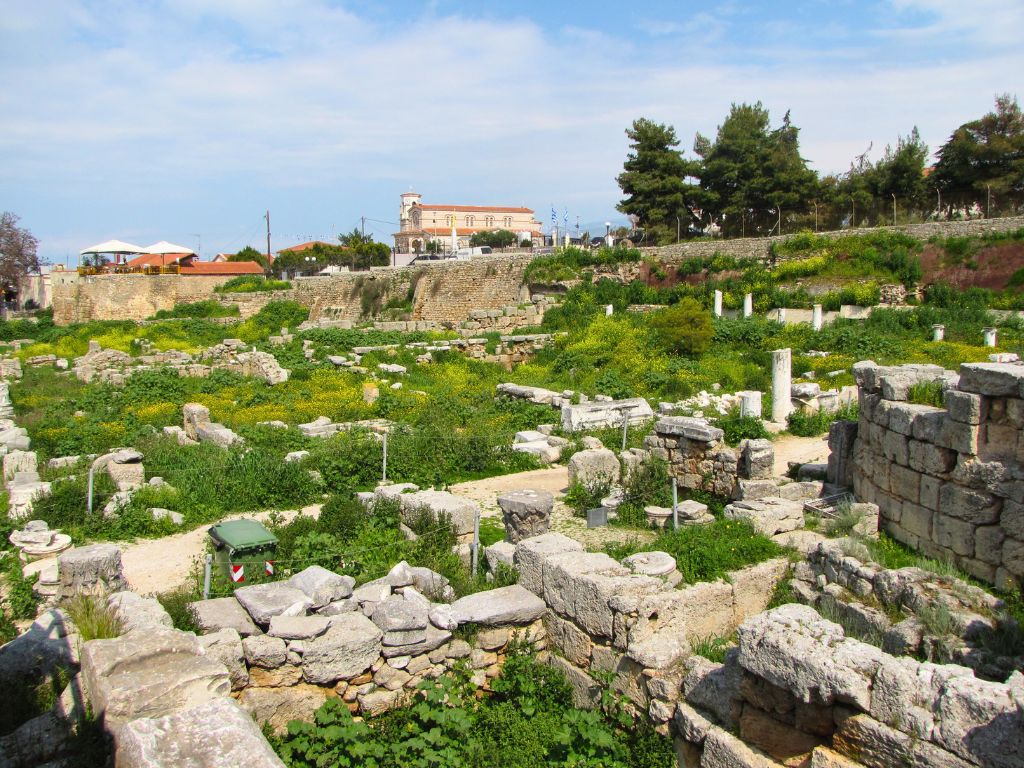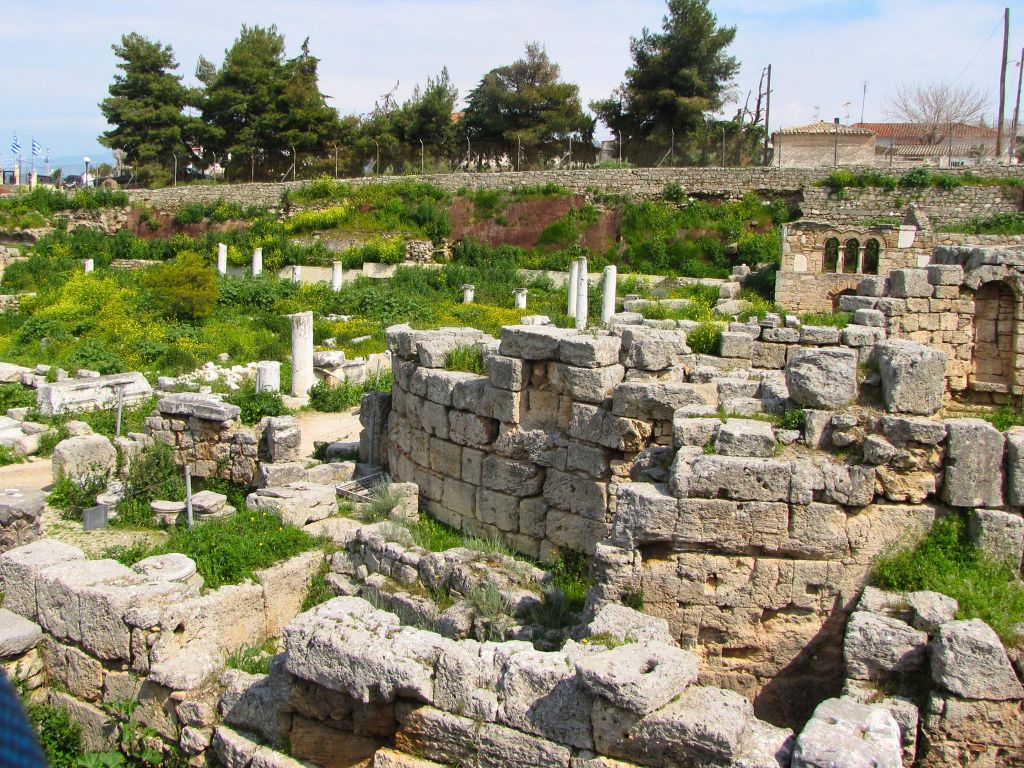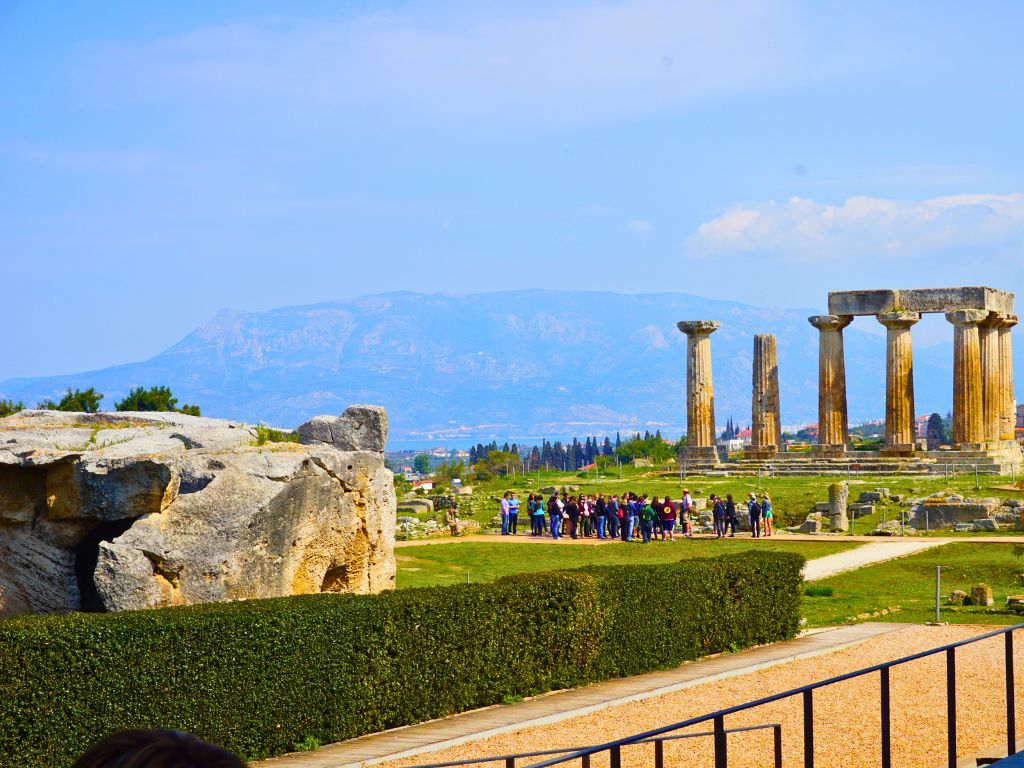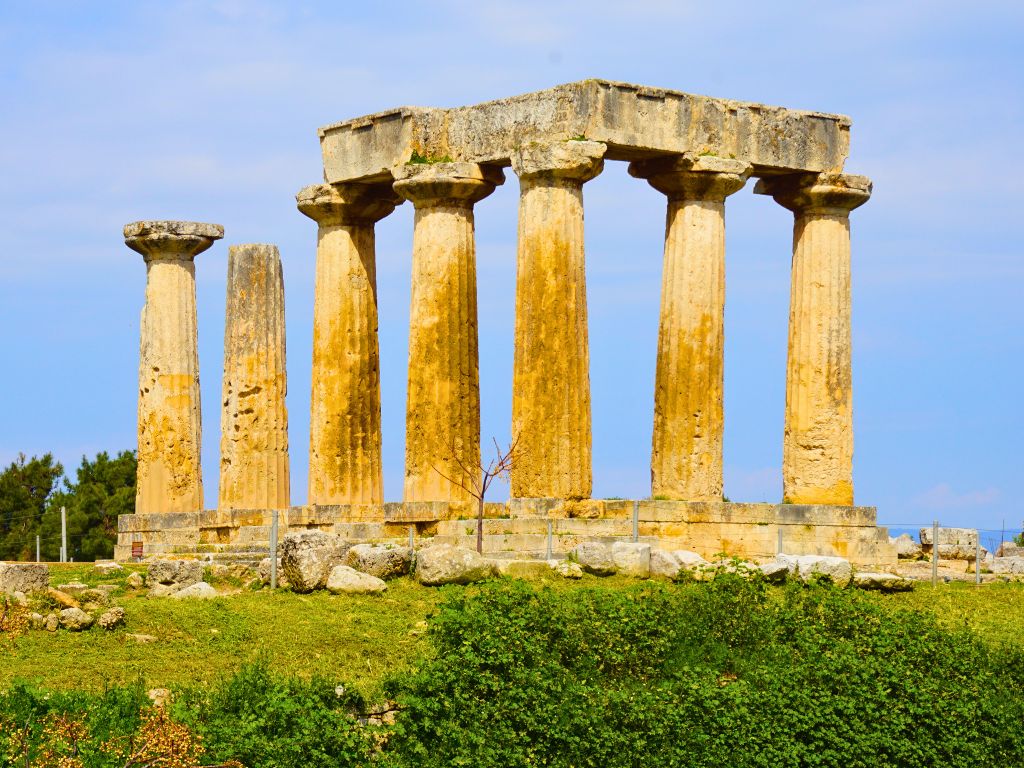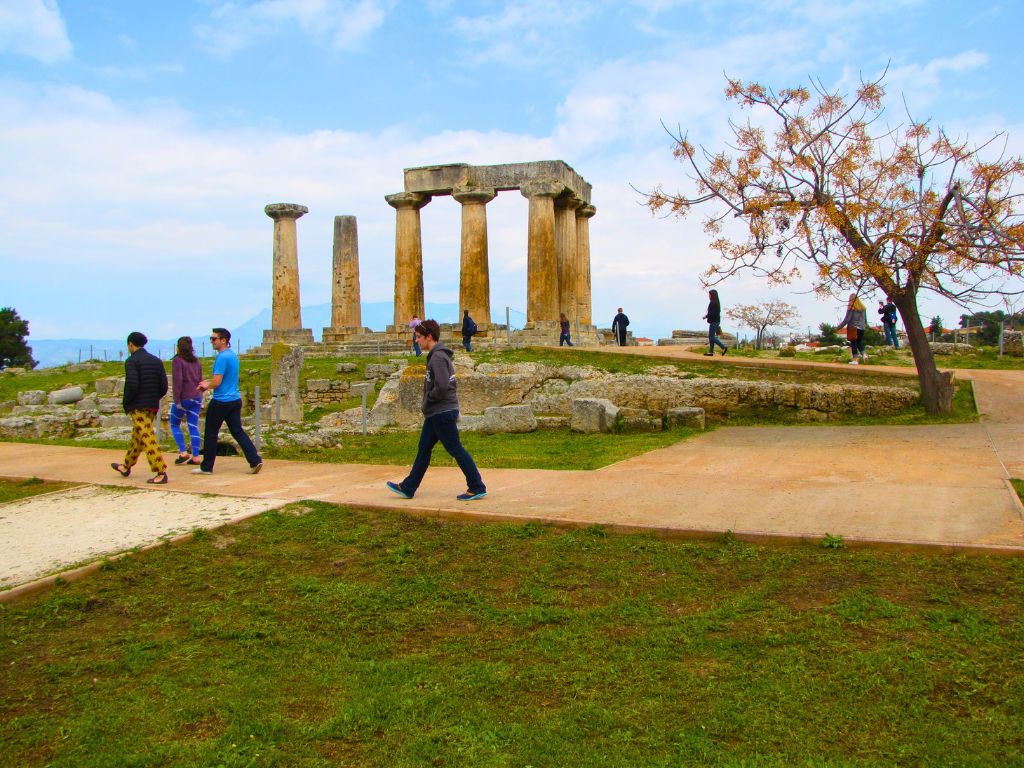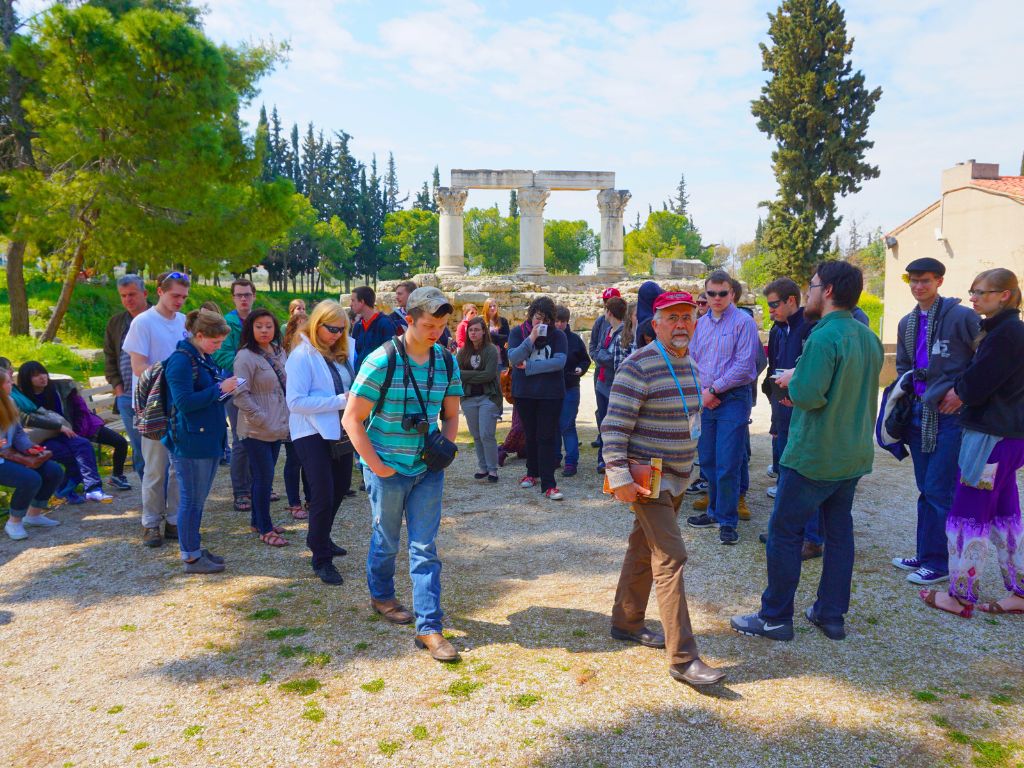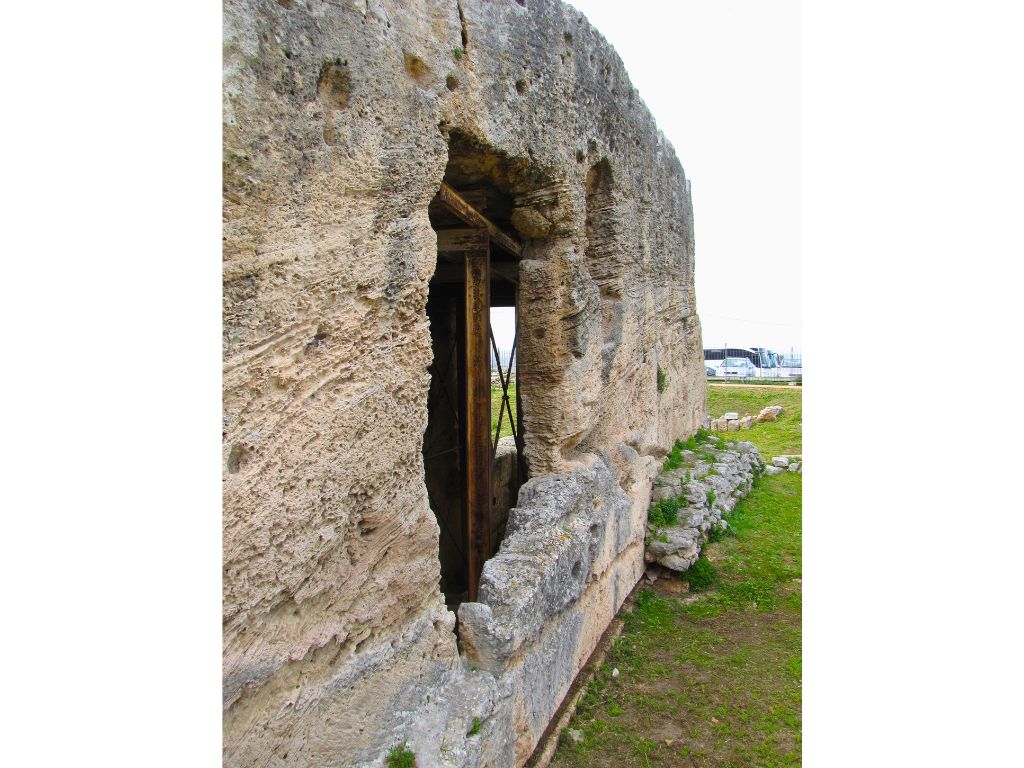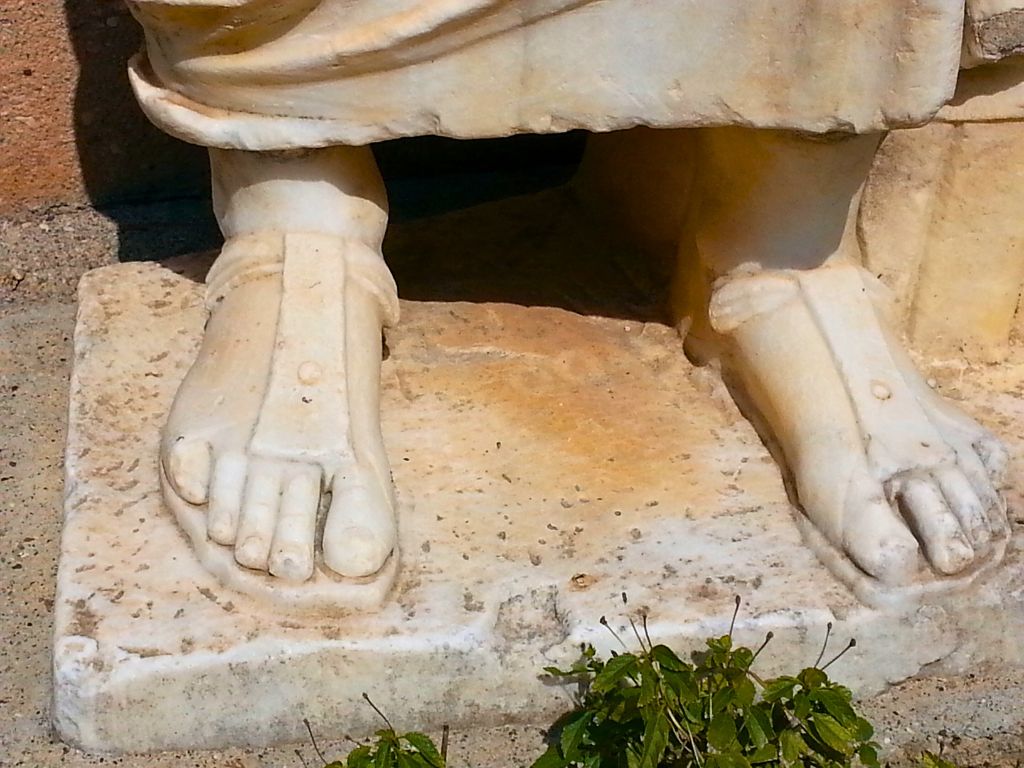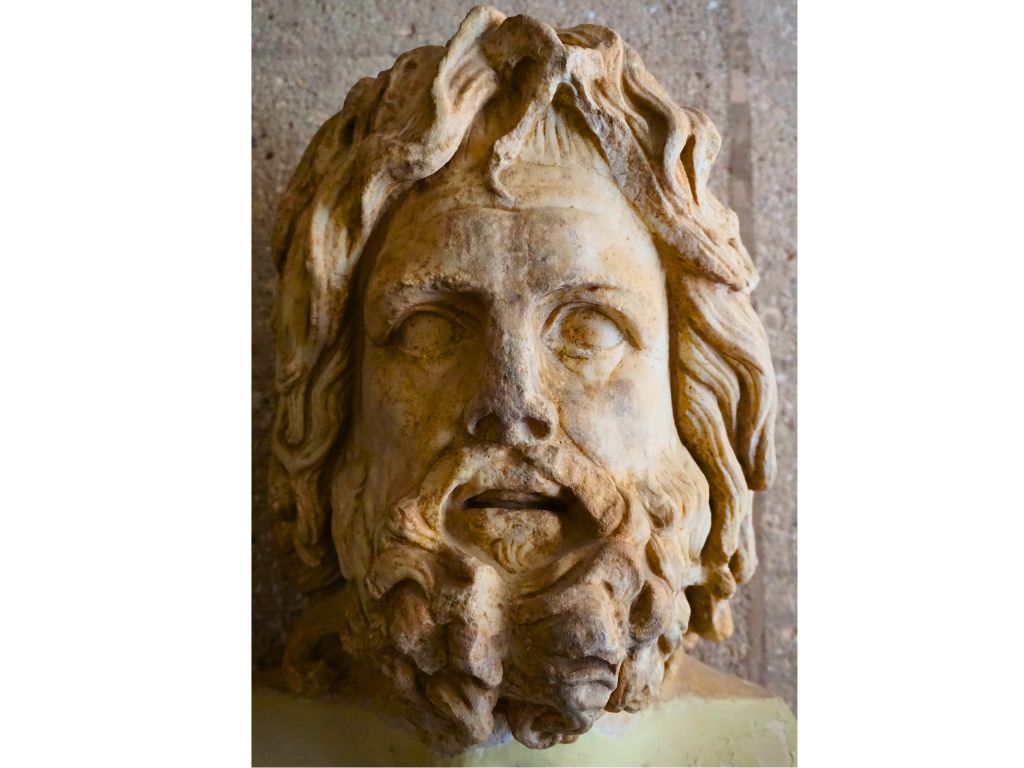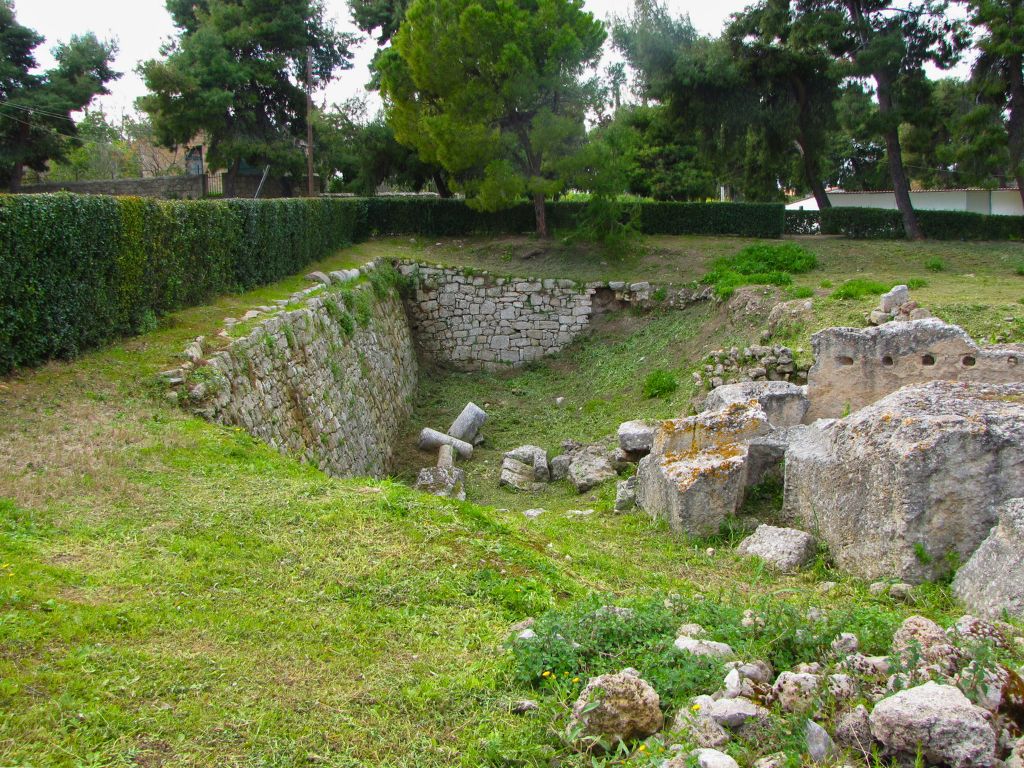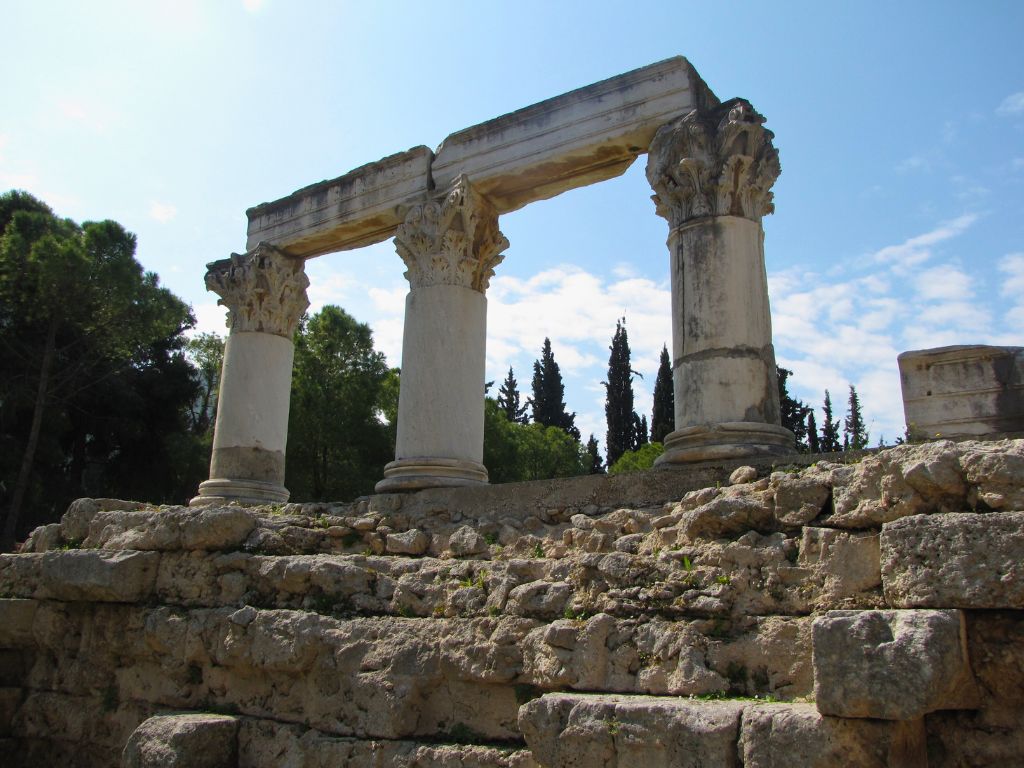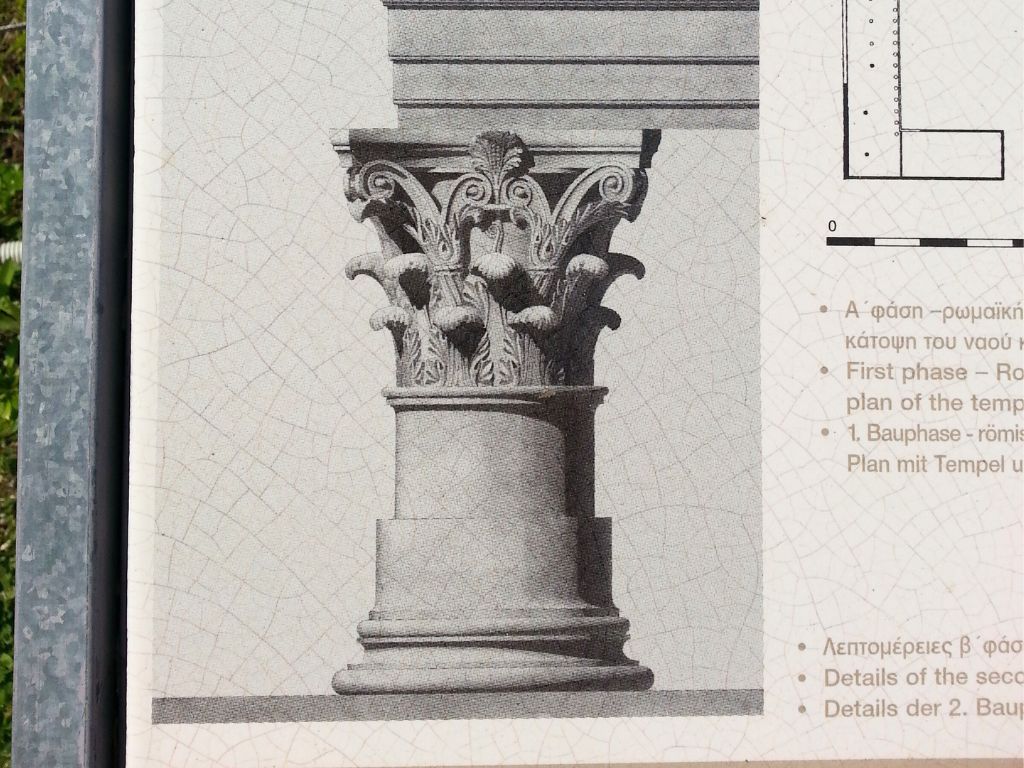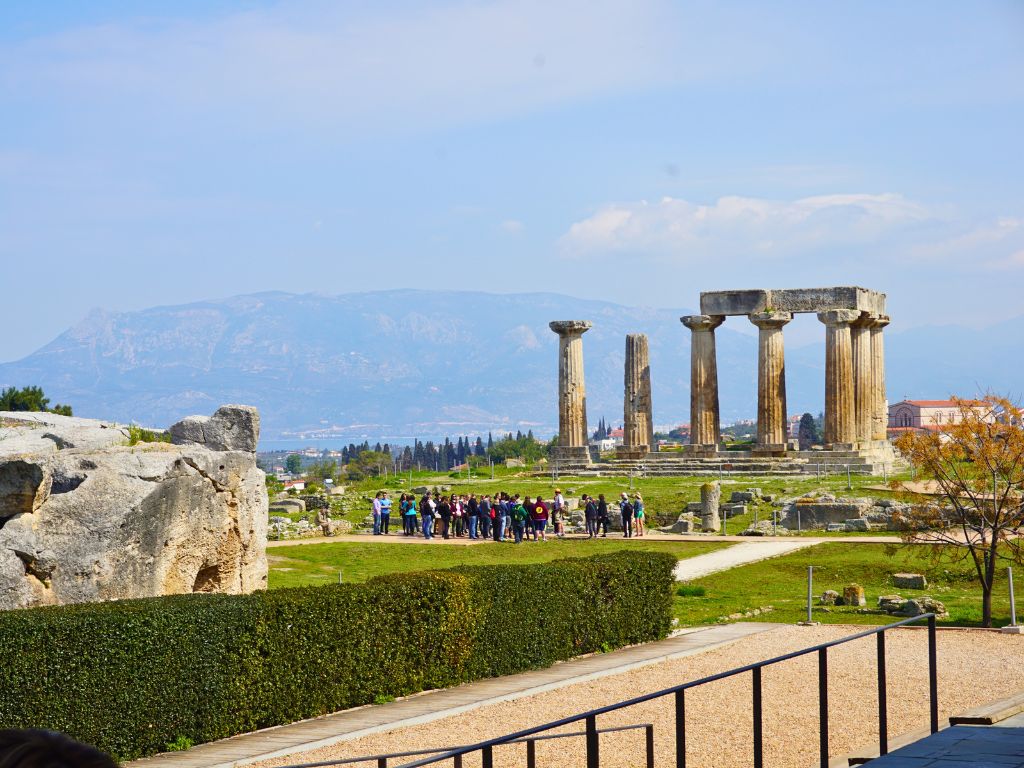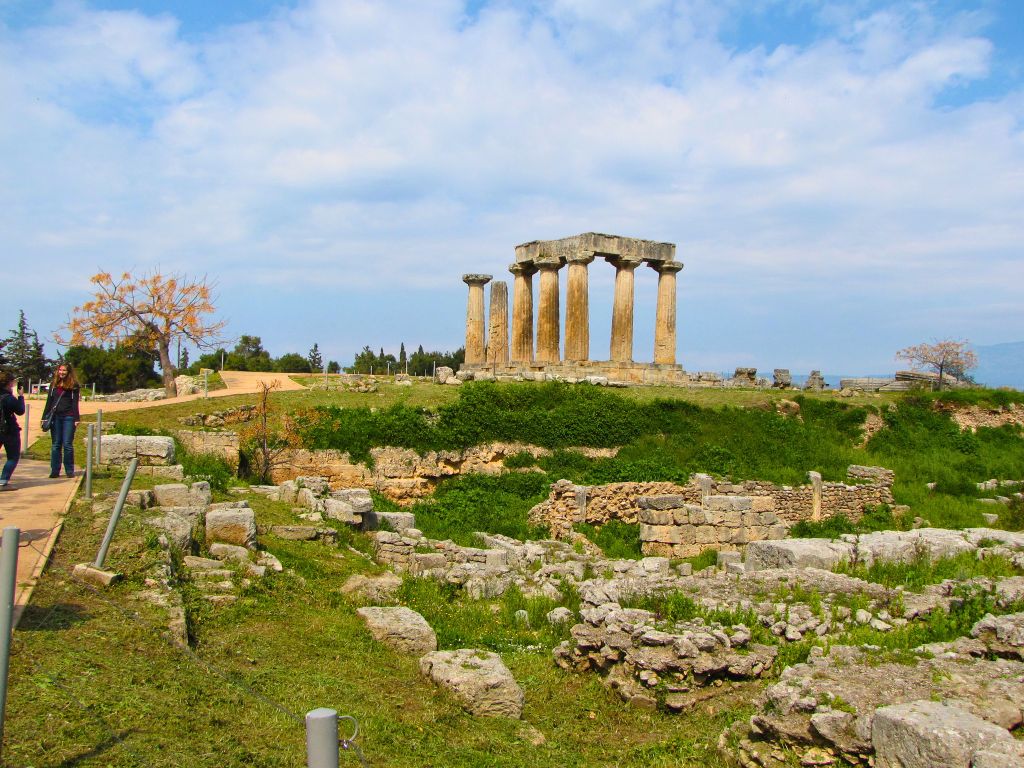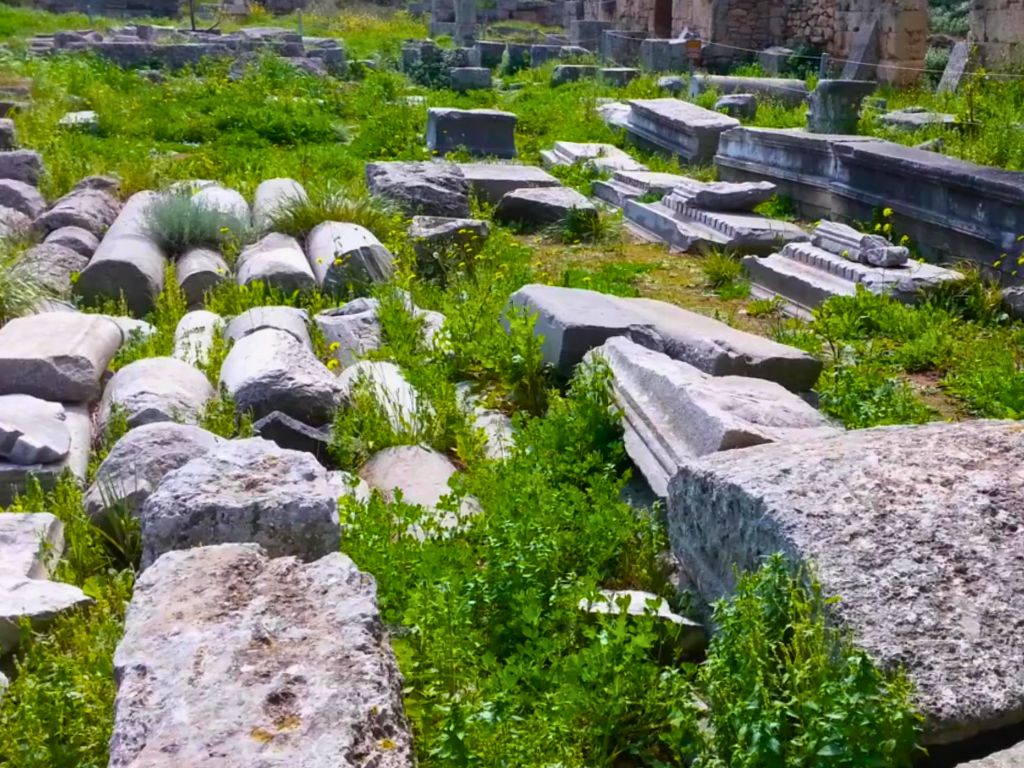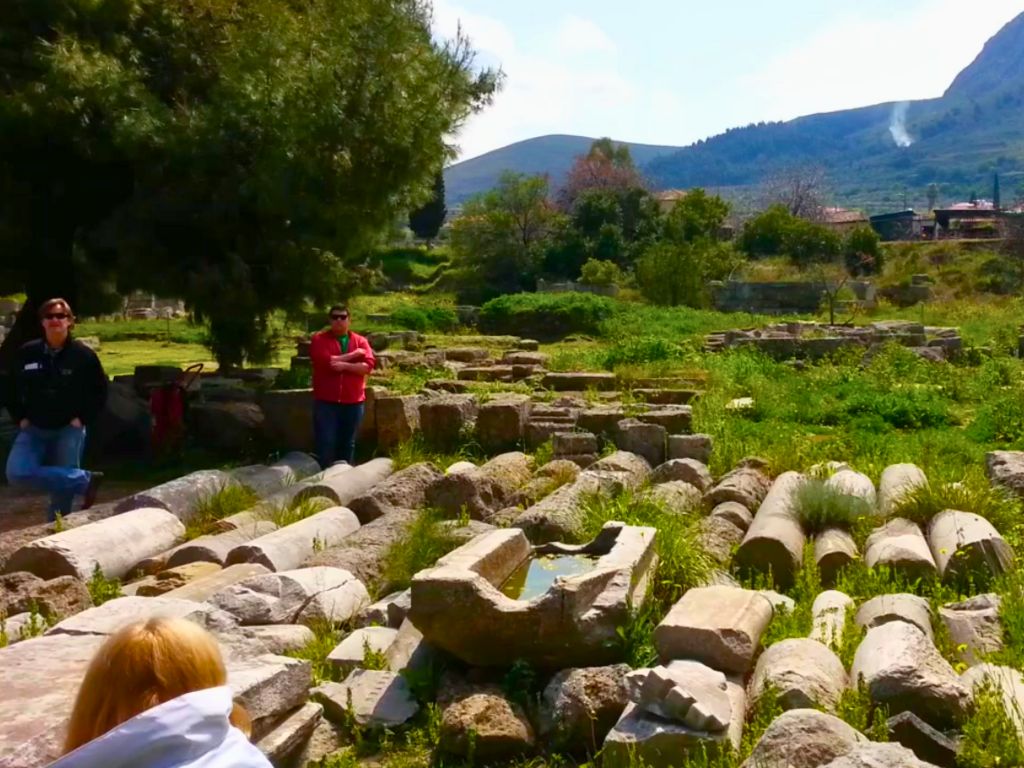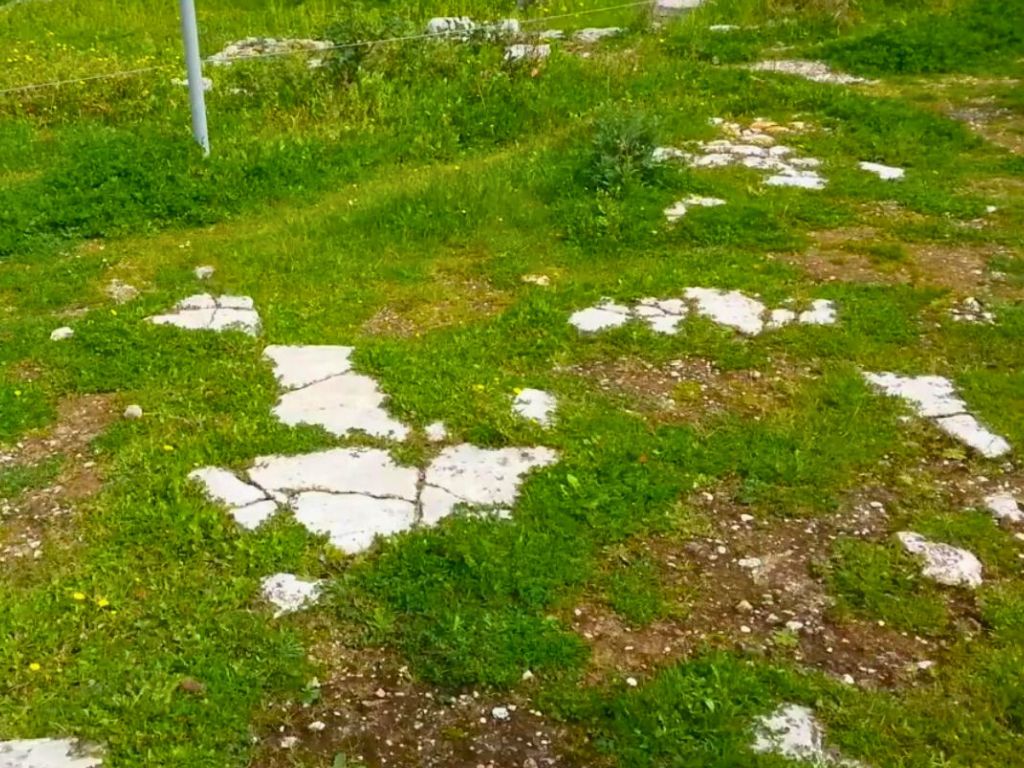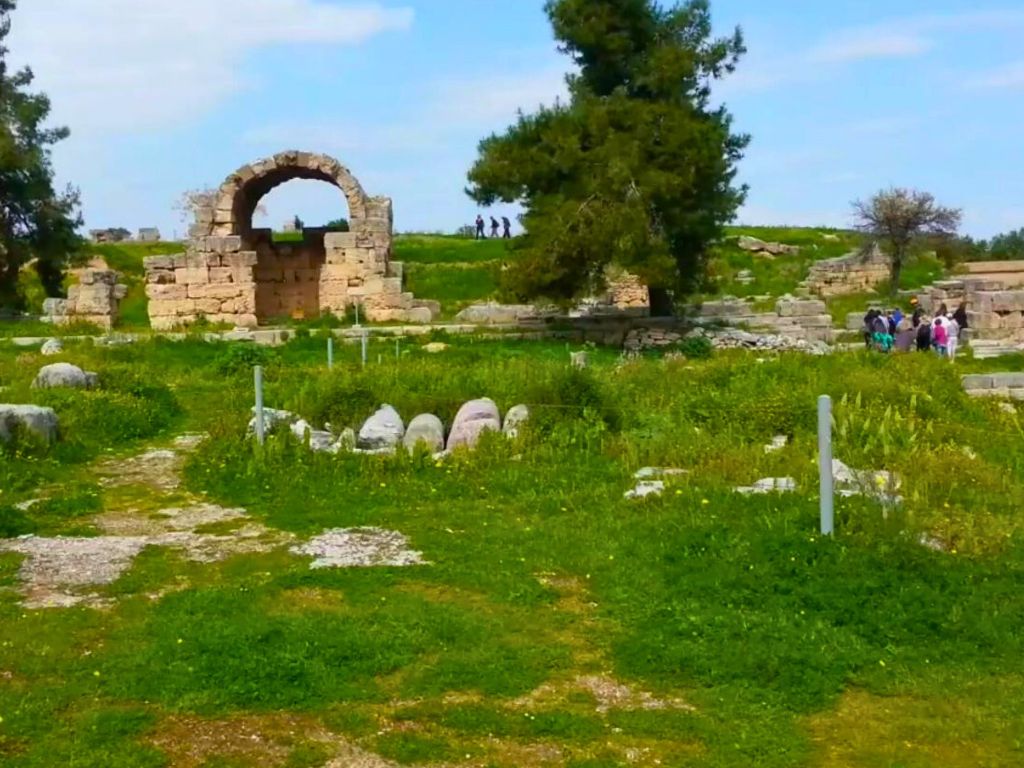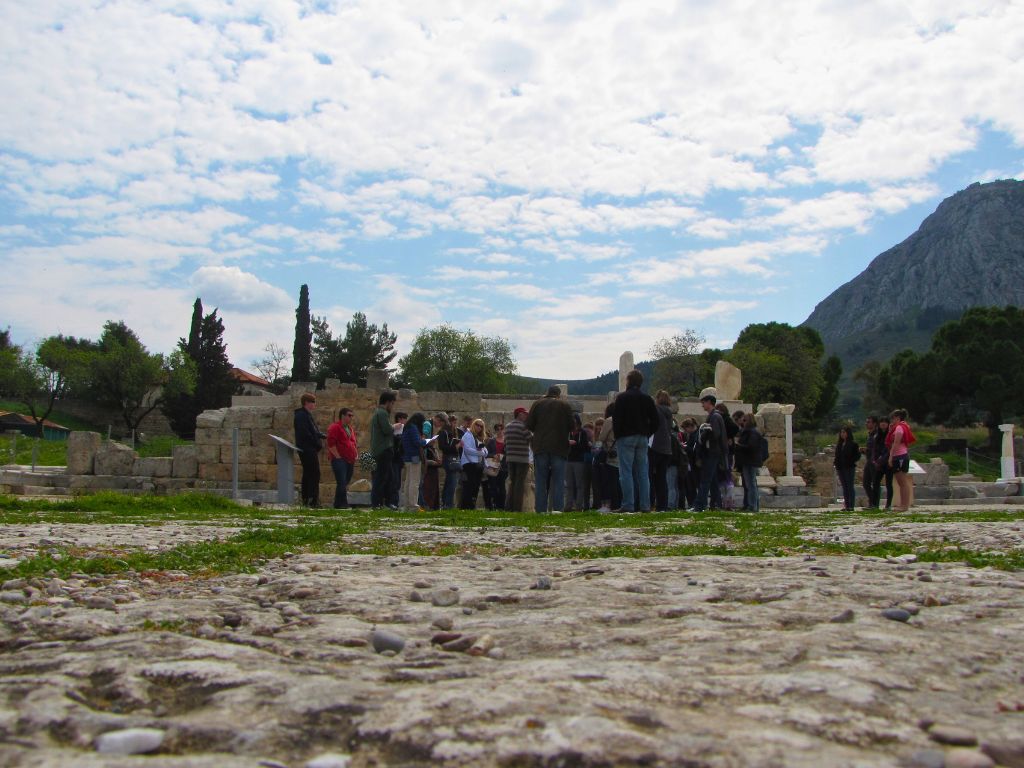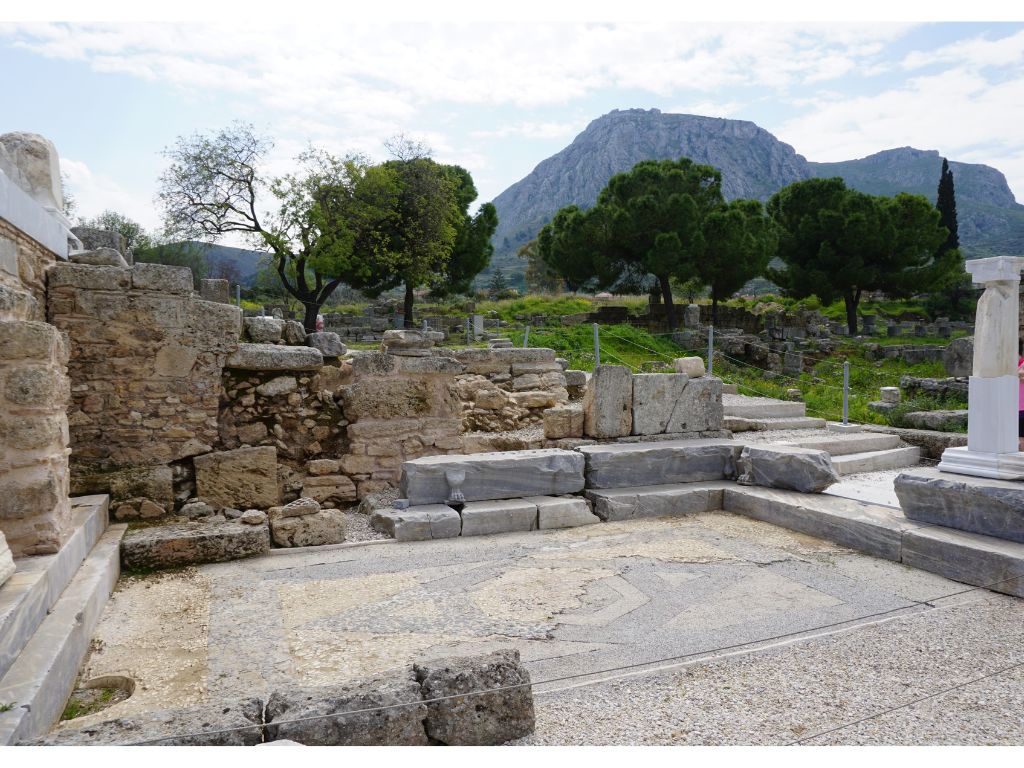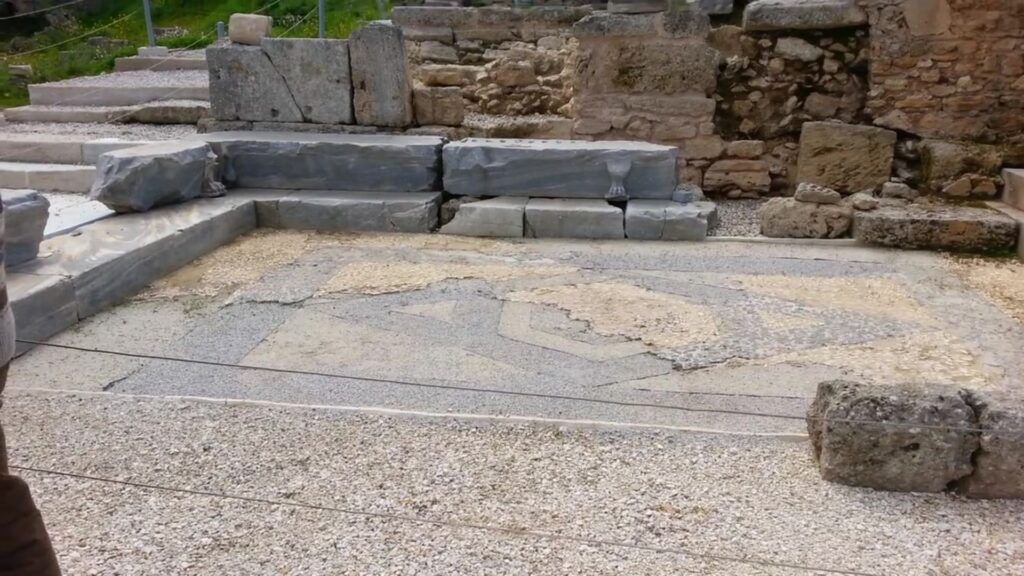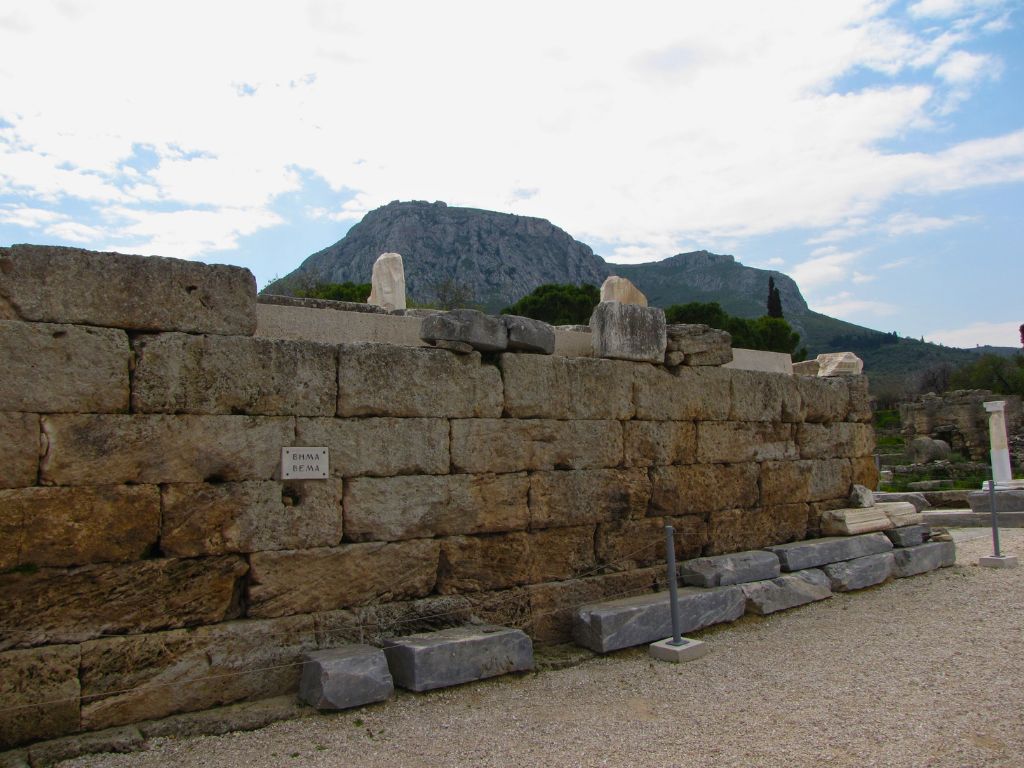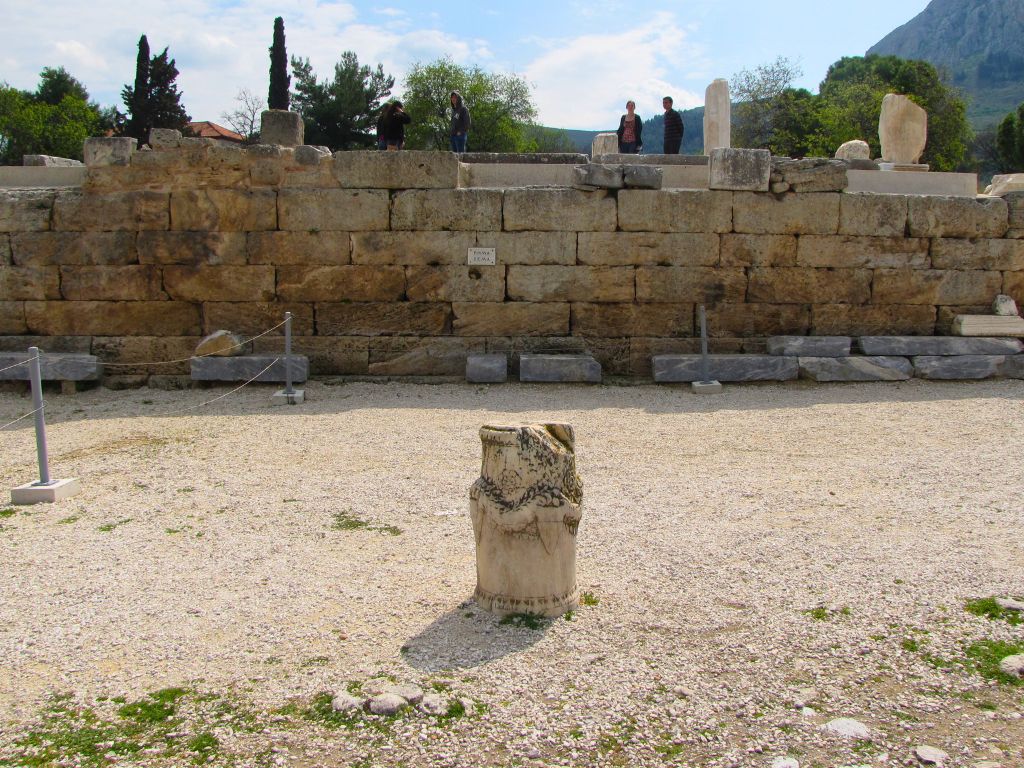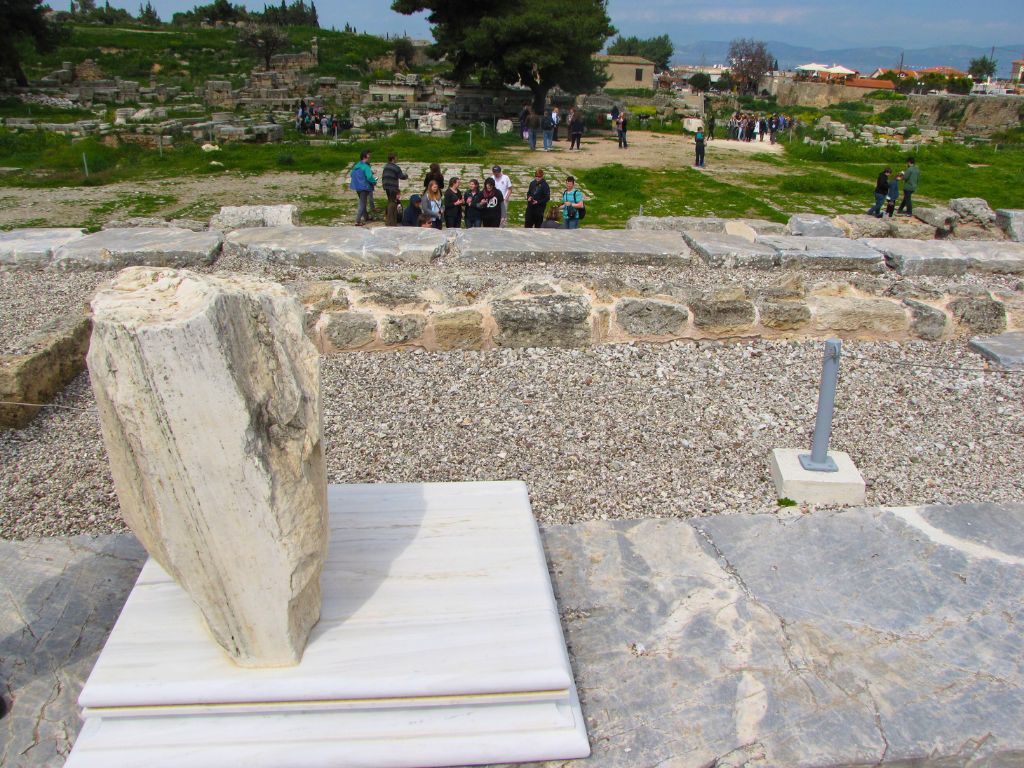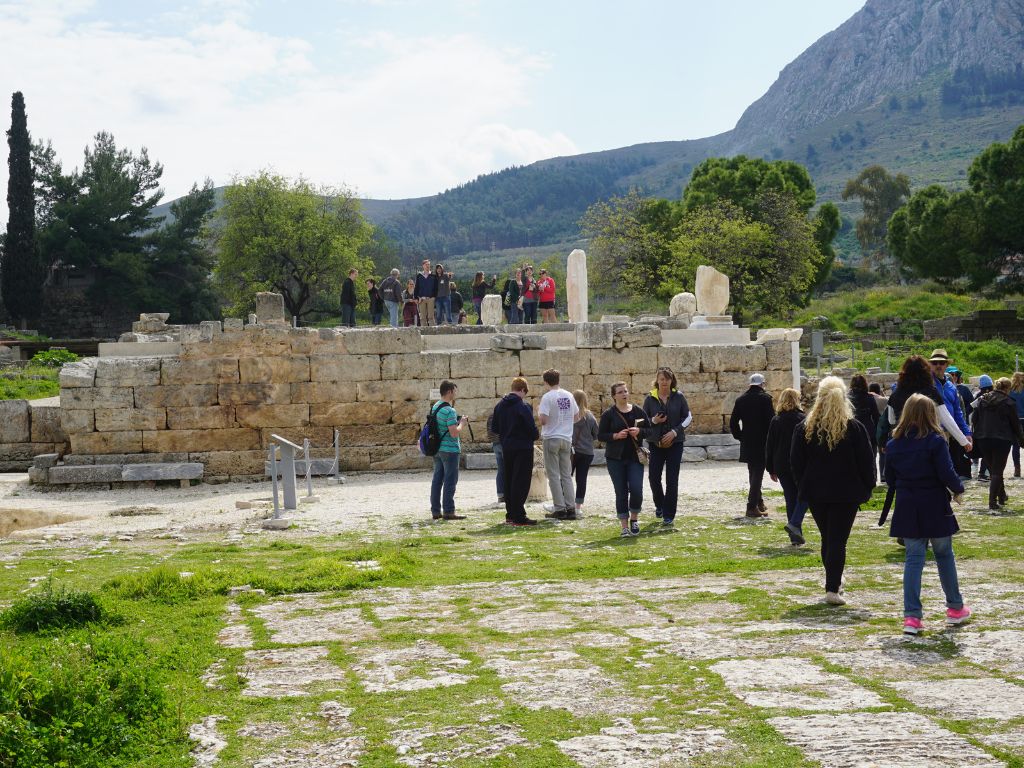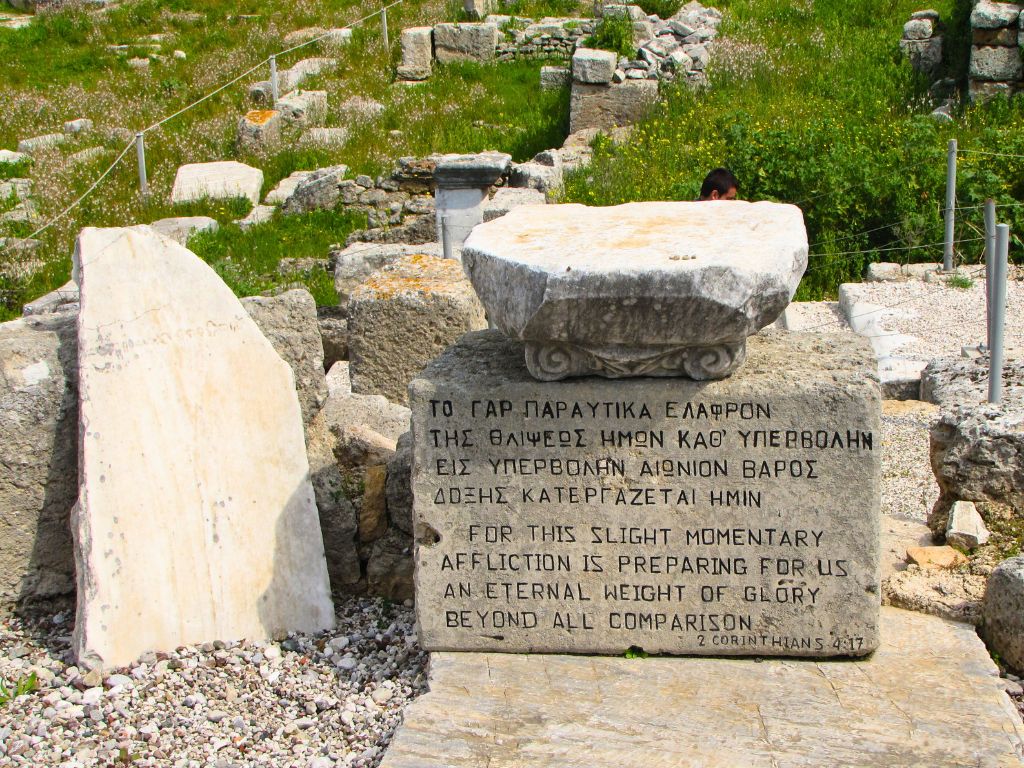Now we are going to see the Archeological Museum of Ancient Corinth. First, I would like you to see a design. Look at the hanging on the wall. We have an inscription on a door lintel. The first syllable of the word, synagogue, is missing. And the second part of the second word is also missing, but definitely it says Hebrew. Clearly readable, the inscription says, Synagogue of Hebrews.
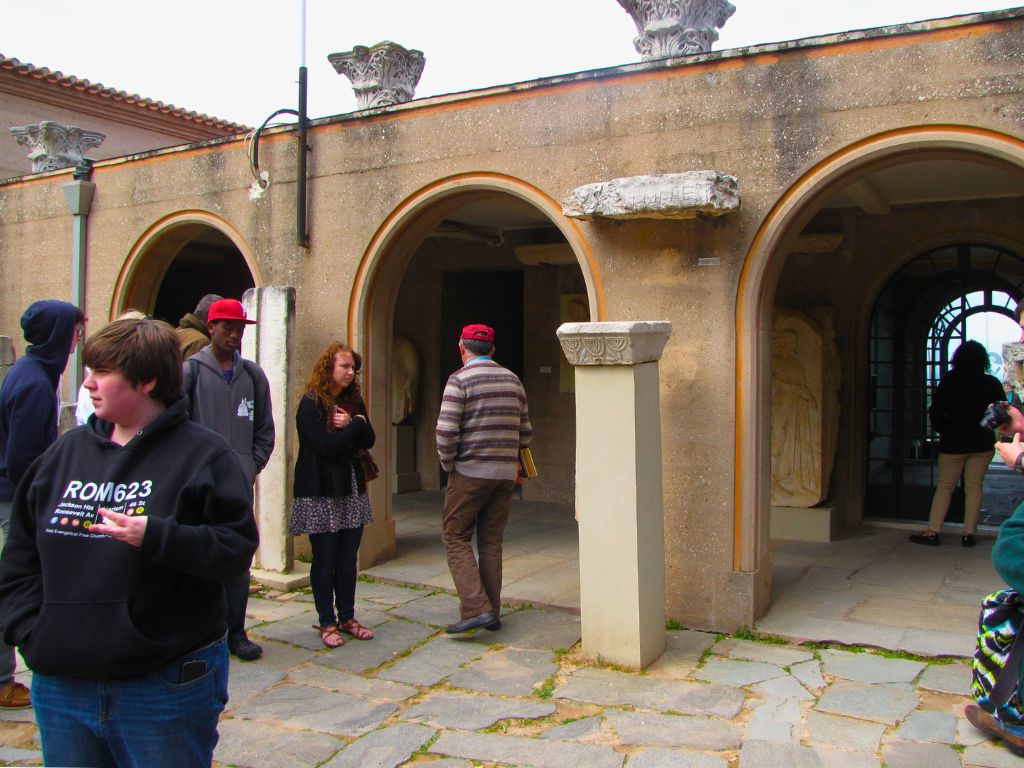

Do you emember the first place that the Apostle Paul went when he arrived at his destination? He went to the synagogue to preach the gospel, throughout his mission journey.
Until he came to Corinth.

In Corinth Paul made a distinction. Acts 18:4-6 says Paul was occupied with the word, testifying to the Jews that the Christ was Jesus. And when they opposed and reviled him, He shook his garments and he said never again with you. Paul officially turned to the Gentiles.
Next, I would like us to see a small room dedicated to Asclepius, the god of healing. Briefly I would like to remind you of his story. Asclepius was the son of Apollo, and a mortal lady, called Coronis. That means he was the son of a god and a human lady. Asclepius was born mortal and although immortal his father gave him enough education to know all about herbs and the use of herbs for medicine, to heal people. Asclepius arrived to set a high status of using herbs to heal peoplem, even that he rose people from death, which made two gods furious against him. These two gods were first, the mother earth. She went to Zeus complaining against Asclepius. saying to Zeus, “If your mortal grandson continues to raise people from death, then the weight on my chest is going to be unbearable and I am going to collapse.” The second god was the god of the underworld, Hades. You know, he had a nickname. Hades was called, by the Greeks, Pluto. Pluto, in Greek, means richness. And Hades was called “Richness,” because his kingdom was only getting richer and richer and never poorer. But, for the first time, the activity of Asclepius made Hades afraid, afraid to get poorer. Hades was also furious. And Hades went to Zeus and told him, “Look, this man disturbs the world order. You have to take him from the earth.” So, Asclepius died young, a young husband and young father. He left behind his wife and five orphans. He went down to Hades, went through the fair judgment, but because he was pious he went to the Elysian Fields. Even there, he never once made an expression against divinity, even though he left behind his widow and the orphans. So, the gods thought once more about him, decided to invite him to Mount Olympus. In a divine banquet they shared ambrosian nectar with him, thus making him a participant of the divine nature. And who else could be more capable and competent to become the god of healing than somebody who had been born mortal and had gone all through the struggle of mortal life, including pain. Hades had tasted even death and for that reason, he became the god of compassion, mercy and healing.
This is a real prefiguration of Jesus Christ in the pagan world. (A prefiguration of Jesus Christ in the Old Testament is Melchizedek.) So, people went to his temple. His temples were the hospitals of antiquity, and his priests were the medical doctors of that time, which remind us of Galen and Hippocrates, and the Hippocratic call/oath. The people went to pray and to request not only the help of Asclepius but also to be helped by his priests.
What you see here are members of the human body, parts of human bodies. They are individual, not broken, statues of body parts. These statue parts were authored by sick people, as a visual request, a visual prayer, for healing. Each body part indicates the sick body part of a person who offered it at the Temple of Asclepius.
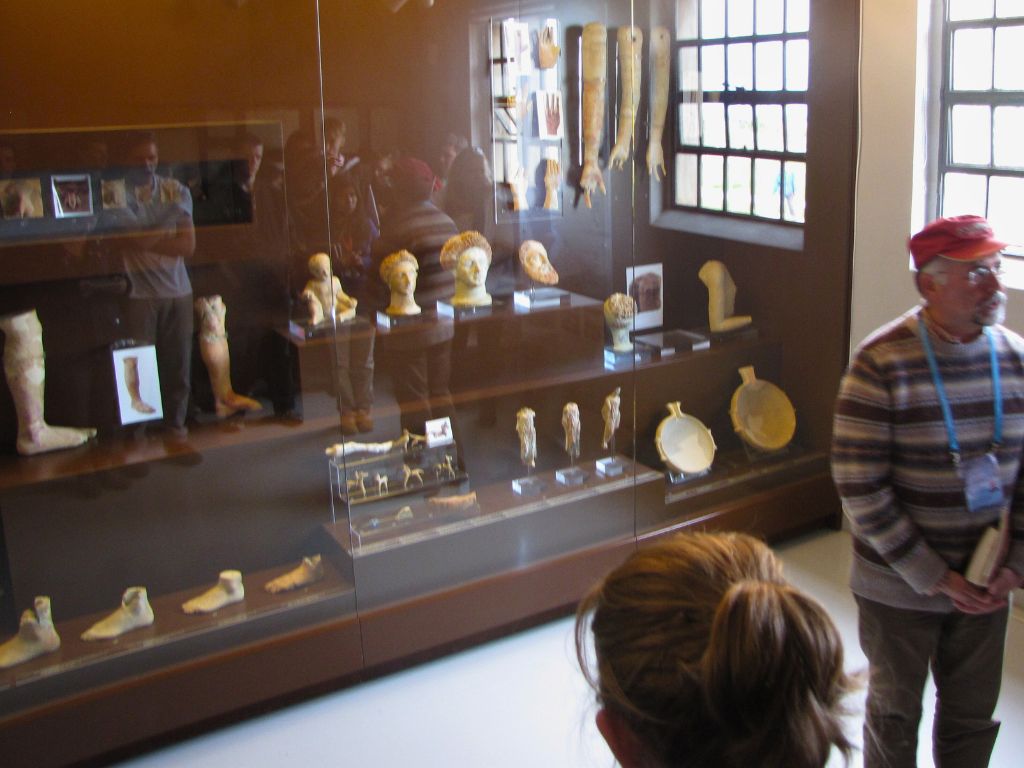
An individual body part standing alone, is a sick body part.
First Corinthians 12:12-22 says, “For just as the body is one and has many members and all the members of the body, though many are one body, so it is with Christ. For one Spirit, we were all baptized into one body, Jews and Greeks slaves or free, and all are made to drink of one Spirit. For the body does not consist of one member, but of many. If the foot should say because I am not a hand, I do not belong to the body, that would not make it any less a part of the body. And if the ear should say because I am not an eye, that did not belong to the body, that would make it not less a part of the body. For if the whole body were an eye, where would be the sense of hearing? If the whole body were an ear where would the sense of smell? But as it is, God arranged the members of the body, each one of them as He chose. If all were a single member, where would the body be? As it is, there are many parts yet one body.
So, if you see somebody in your congregation, somebody standing in the corner alone, accusing the body, the problem is not with the body but with the individual member, who is a part of the body.

In the next room we have objects from the second period of the Corinthian history, which starts with the time of Octavian and the restarting, the reinhabitation of the city of Corinth. The founder of the city was Octavian Augustus and in the Temple of the Imperial Worship we have found some statues, some Imperial portraits, depicting Octavian and his family. One of the best-preserved portraits of Octavian Augustus is at the Archeological Museum of Ancient Corinth.

Just remember that during his reign, Jesus was born, and Octavian is the one who ordered the world to be registered for the first time. And during that registration, Jesus, Mary and Joseph actually went to Bethlehem and Jesus was born.

Two young people that are depicted were his adopted sons who died before him and so neither of them succeeded Octavian on the throne. His successor, Tiberius, was the son of his wife, Livia. Tiberius was the emperor at the time of Jesus public life.
The last head is another Imperial portrait, among the best preserved, the Imperial portrait of Nero, the last of the Julio-Claudian family. Remember, he was crazy.
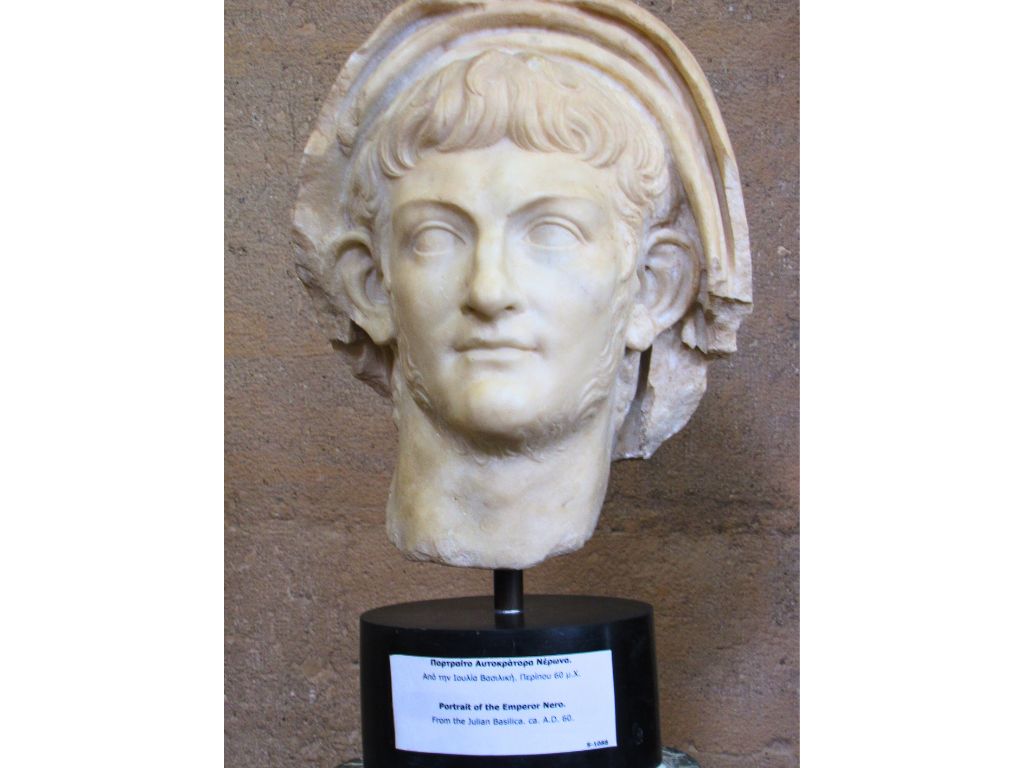
Nero did a lot of atrocities. I would like just to mention that Nero is the one who ordered the first, and one of the most severe, persecution against Christians, during of which Peter and Paul were martyred in Rome.
In the Archeological Museum of Ancient Corinth you see blown glass, a sign of luxury at that time, extremely expensive.
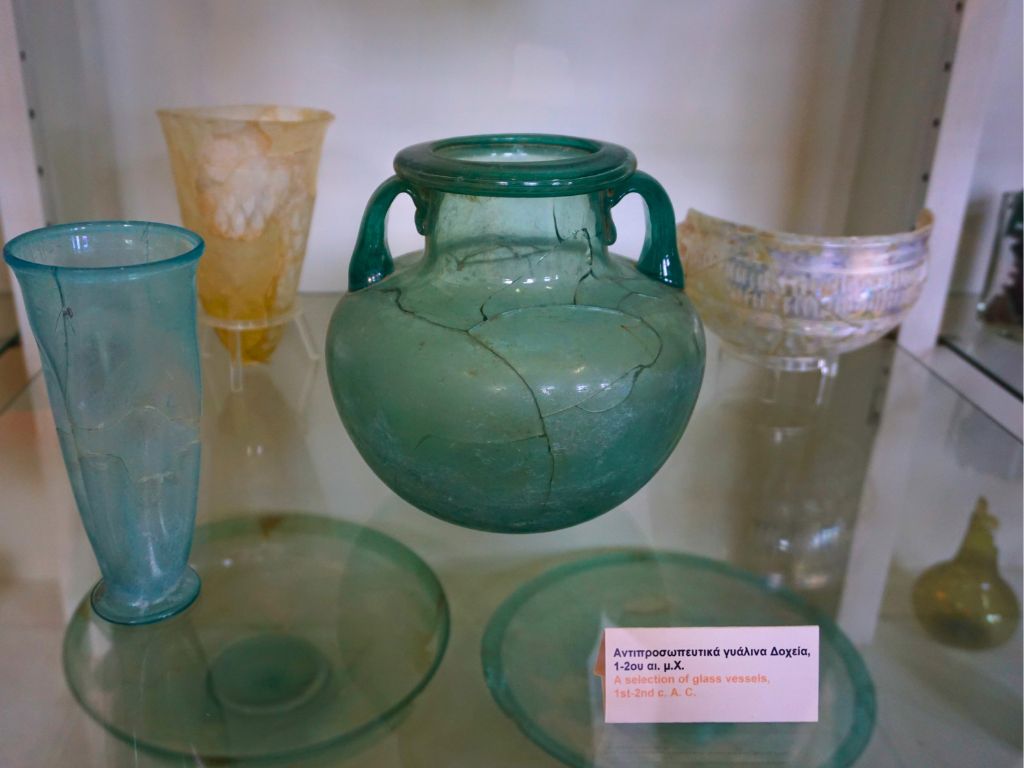


Blown glass was only invented at the first century before Christ, although we knew glass and materials since the beginning of the first millennium BC, especially in the area of Tyre and Sidon (modern Lebanon.)
Remember the two victories building the trophy? In Colossians 2:15 the cross of Christ is a resemblance with the trophy winner. Christ disarmed the rulers and the authorities and made a public spectacle, by the cross, He triumphed over them.

This kind of trophy depiction was also seen in Thessaloniki.
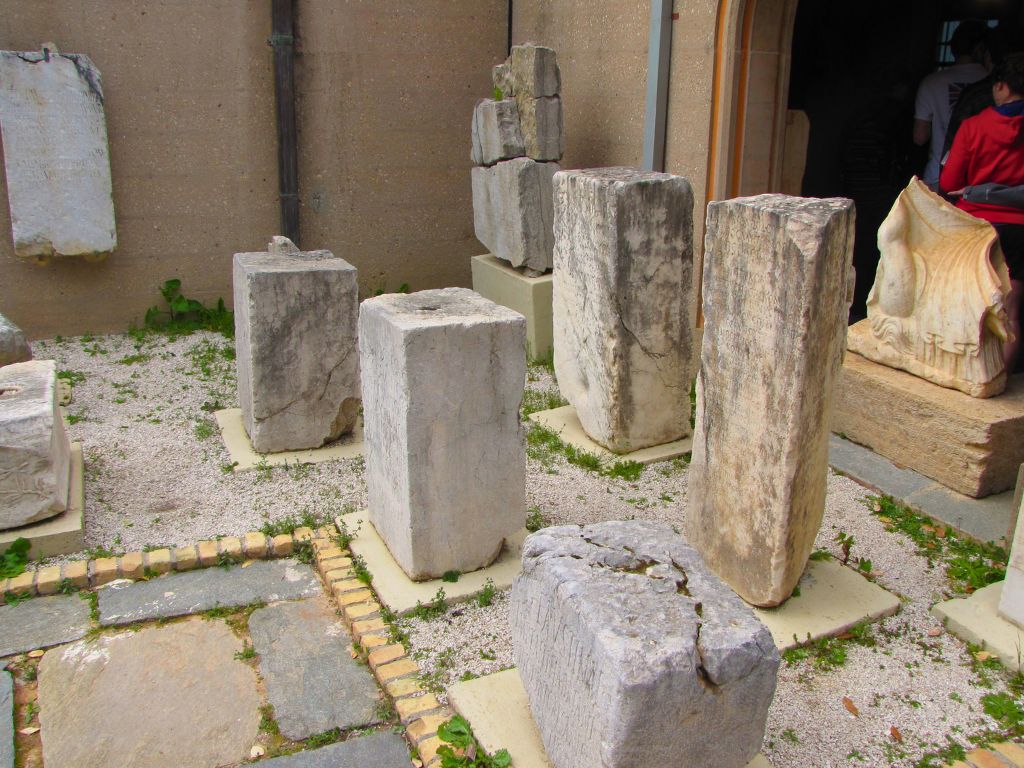
Next, we enter to see the statues of the Imperial Temple. What did the Romans do with their statues? Were these statues broken, or were the heads of the statues never made?

The Romans are considered to be the greatest copiers of history. They copied everything. They copied the classical art of the Greeks, nature and everything, so they made realistic portraits. And they were also the ones who made art industrialized.
So, during the Roman times, in marble workshops, they made prefabricated bodies by templates, and anyone who needed to make his own statue could buy a nice-looking body and could add only his head (a kind of Photoshop.) You would never see that in the classical arts.




In the books of 1 and 2 Corinthians, we have to find and discover the cultural context. Why do I say these things to you? That is how we can see the simple message of God. For example, in 1 Corinthians 11, the problem of women and wearing scarves is not about whether to put on a scarf or not put on a scarf. The problem in Corinth, and the message of the God, is “Love your neighbor and do whatever is possible to show your love,” regardless of who it is. Even for the ladies of the temple and the scarves, the message of Paul about head covering is not about the head covering itself. Paul’s message is about the love shown even to the ladies who were at the margins of the society of that time, whose hair was cut off short. And to show them love, all of the ladies were to look alike. This hid the knowledge of who was formerly a temple prostitute. This is what we need to discover behind the cultural context. And in the case of the scarf, the message is love. The message is not the scarf. The scarf is the mean.
As you saw in Corinth, the Apostle Paul was very protective, trying to give everyone the same status of the good lifestyle in the church, even to the slaves from the temple. He was really the only one, and he was very revolutionary for the time, who said that there is no difference between man and woman. And remember that until that century, a woman depended on the man always. And the emancipated ladies were mostly prostitutes, and those ladies were the only women who had the right to go alone everywhere to speak directly with a man, equally, like a man to man.
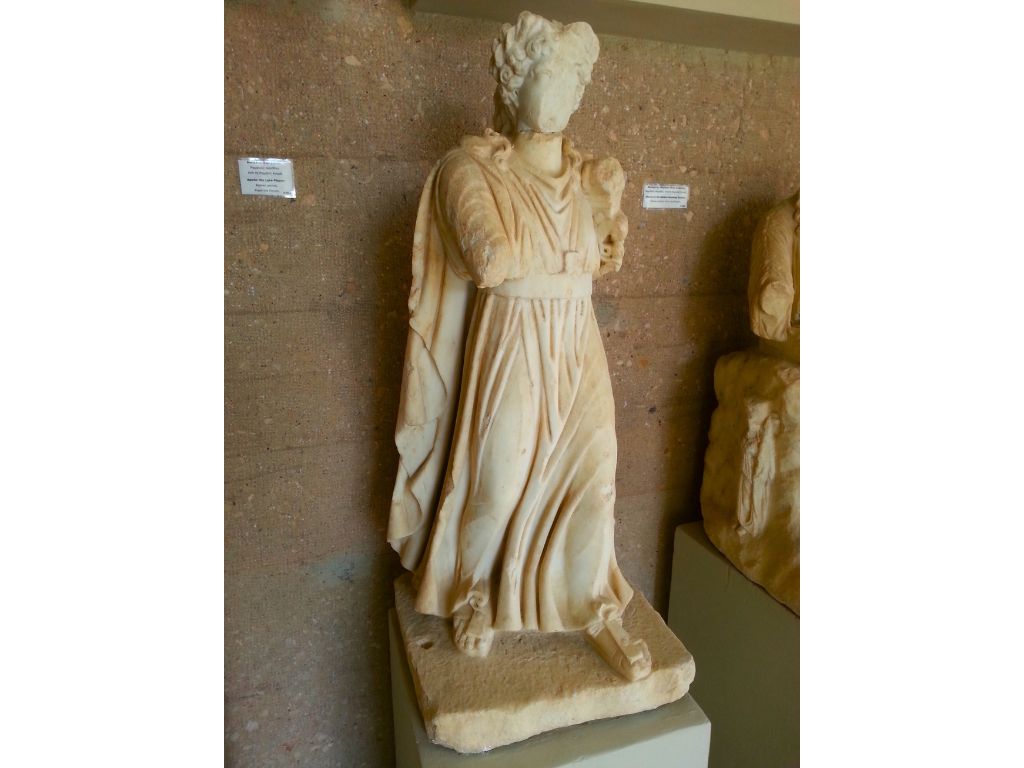
Remember, another similar cultural context related to Corinth. The Apostle Paul said in 1 Corinthians 9:13, “if by eating meat I scandalize my brother, I will never eat meat again in my life.” In that century it is not that the meat is bad, nor that the meat is sin. Sin and the bad thing is to scandalize the brother. So, Paul says, yeah, I’m ready not to eat meat again for showing my love to my brother.
In architecture there is a bit of a question about the ancient Greek orders, and generally the style of the Greeks. There are mainly three: the Doric, the Ionic, and the Corinthian. It is claimed that all of the styles, and the art of the ancient Greeks, were “inspired” by nature, and we know how highly Greeks appreciated and admired nature.
The Doric style is considered to be the most simple, possibly the oldest, and it was developed mostly among the Dorians. And this is why we have this name. Actually, the Dorians were appeasing the Athenians, who were living in the middle of Dorians because of their Athenian culture in the feminine. We have the comparison of a vase that they used most of the time to carry water, which was hauled by two sides, the women with the amphora and the man by the dagger. Definitely the Dorians were a more masculine, more warious people, and many times that made this comparison.
And then there is the Ioninian style that we see after the eighth century, mostly at the end of seventh and sixth century BC (possibly a little bit later) Ionic style is more elaborated. It comes from the Ions, who were richer Greeks dwelling in Asia Minor and the islands of the Aegean Sea. There is definitely a lot of effort to interpret the legacy of the Ionian style. With the development of the Ionic style, the ionic order, we see a capital decorated with spirals. They say that the spiral is the cap of a mushroom.
The latest and the most elaborate style is the Corinthian. The Corinthian style appeared at the end of the fifth century BCE or beginning of fourth century – which means in the middle of the classical time. They say that the sculptor and the architect who invented the Corinthian style is Polykleitos. Polykleitos was from Argos, and he came to Corinth in a visit, and he was wandering in the cemetery of the city. He saw the grave of a little girl and upon the grave a basket was left, along with some offerings and covered by a marble plaque. Wildflowers grew up around the plaque, and so that was the inspiration for Polykleitos to make the Corinthian capital. The Corinthian capital, and the Corinthian style became very popular during the Renaissance and that is why today we see a lot of Corinthian style on public buildings in Europe and United States. Here is a Corinthian column:
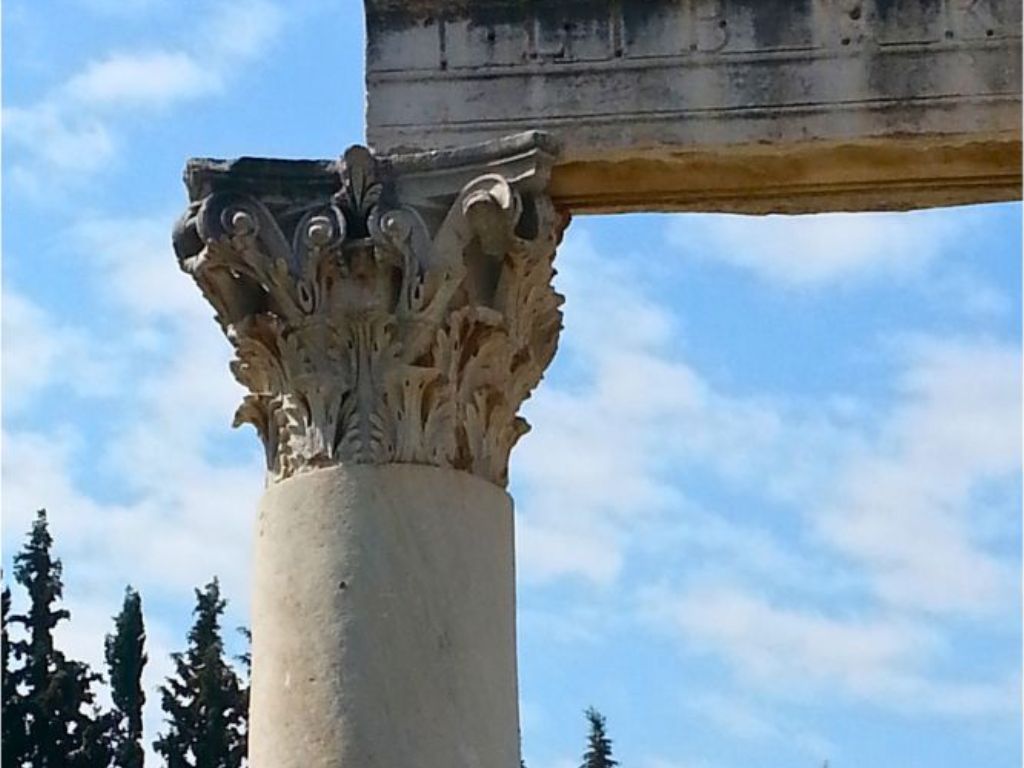
In regard to relics, both Orthodox and Catholics highly respect the relics of the saints. They believe that some very high standing scenes are not decomposed. So, they have relics of the whole body. Definitely what we see, when we come close to that relic, is a mummy. In Corfu they have one of these saints and they are very proud about that saint. But, you know, nobody can say, “Who’s mummy is this?” If it is the mummy of the saints’ spirit, or another mummy (because no mummy, or neither really, writes on it, “I belong to this person, or to the other person.”)

A man in Corfu told us that a mummy makes miracles happen. The mummy walked through the wall and then he walked back. And that is why the Turkish fled. This kind of miracle is described from generation to generation, all the way back to the pre-Christian time. The cult status of the ancient Greeks made miracles. The studies of the Catholic Church make miracles as well. Bones are venerated. And so, we can miss the sense of our salvation, which is the blood of Jesus Christ. The devil likes to keep people enslaved to the bones, and miracle scenes, and all these kinds of things.

In describing ecstatic appearances in 1 Corinthians 13, definitely, they are real. Yes, I speak about the devil and the devil does these things. Miracles are not only made by God, and miracles do not identify God. Teaching identifies God. And the teaching of the Holy Spirit is the word, the doctrine, that identifies God. This is reasonable worship (refer to Romans 12:1.) But, the miracle is common between God and Satan. Remember Moses, and all the miracles Moses made in front of the Pharoah? And the witches of the Pharaoh did the same miracles, except one. The snake, the stick snake of Moses, ate the stick snakes of the others.
The miracle definitely is ecstatic. And all these things about fire dancing, and all those things, is real. You see that. They are not a trick, but they do not identify divinity and God. So, first of all, try to disconnect from all these miracles, and all these things, and point to a supreme way, the way of love. Corinth is a very good opportunity for somebody to see these things closer and in context.
In regard to the end times. John the Baptist never spoke about the end of the times. He never spoke about future events, nothing. But Jesus said, in Matthew 11:11, that there is not greater born from a woman than John. And Jesus said that. And prophecy comes to an end with John the Baptist. John 11:13 says “For all the Prophets and the Law prophesied until John.” Jesus says that because he, John was the prophet.
In Corinth there are many good places for meals. Here the Moody Symphonic Band members ate a lamp chops dinner, followed by giving a concert in Greece.
